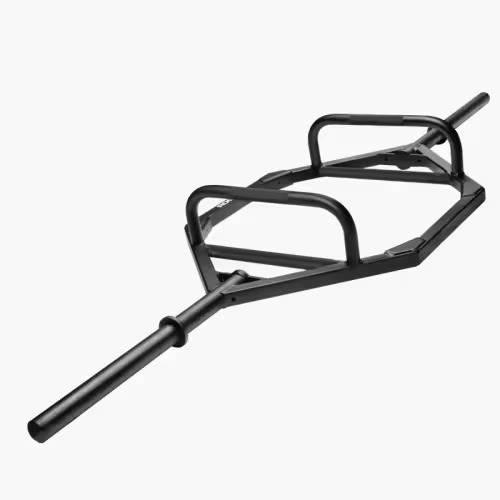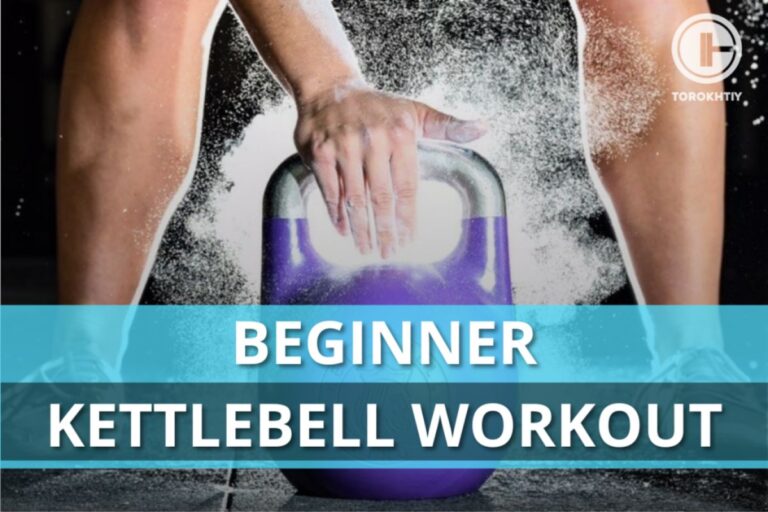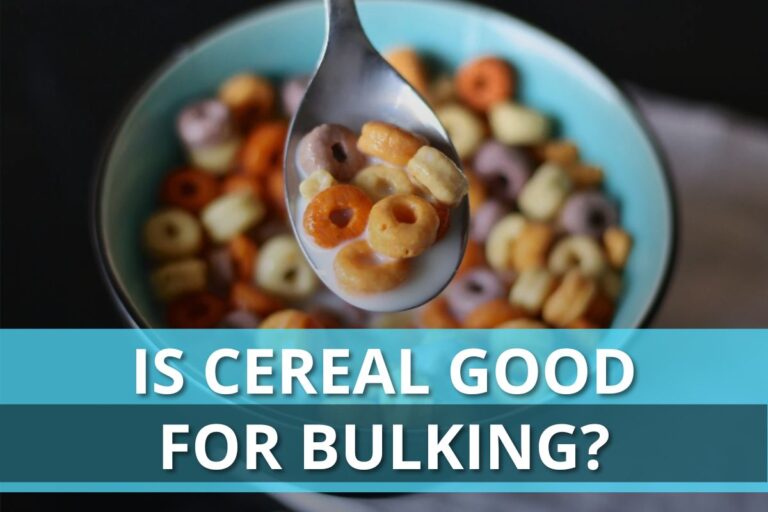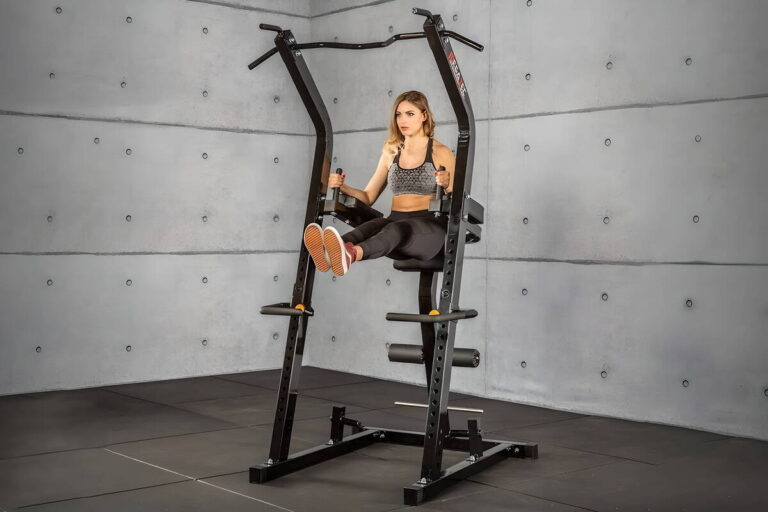How Much Does a Trap Bar Weigh?
If you want to test your limits and do heavier deadlifts, a trap bar is much safer and more convenient. Whether you’re a beginner at the gym or a professional heavy-lifter, you must know how much does a trap bar weigh to understand your limits and know exactly how much you’re lifting.
If you’re wondering how much does a hex bar weigh, the quick answer is that it can weigh anywhere from 35 lbs to 70 lbs. However, the standard hex bar or trap bar weighs approximately 55-60 lbs. The weight of a hex bar depends on multiple features, such as its quality, size, and design.
Continue reading ahead if you want to know how heavy is a trap bar and which one is the most worth it at its price point.
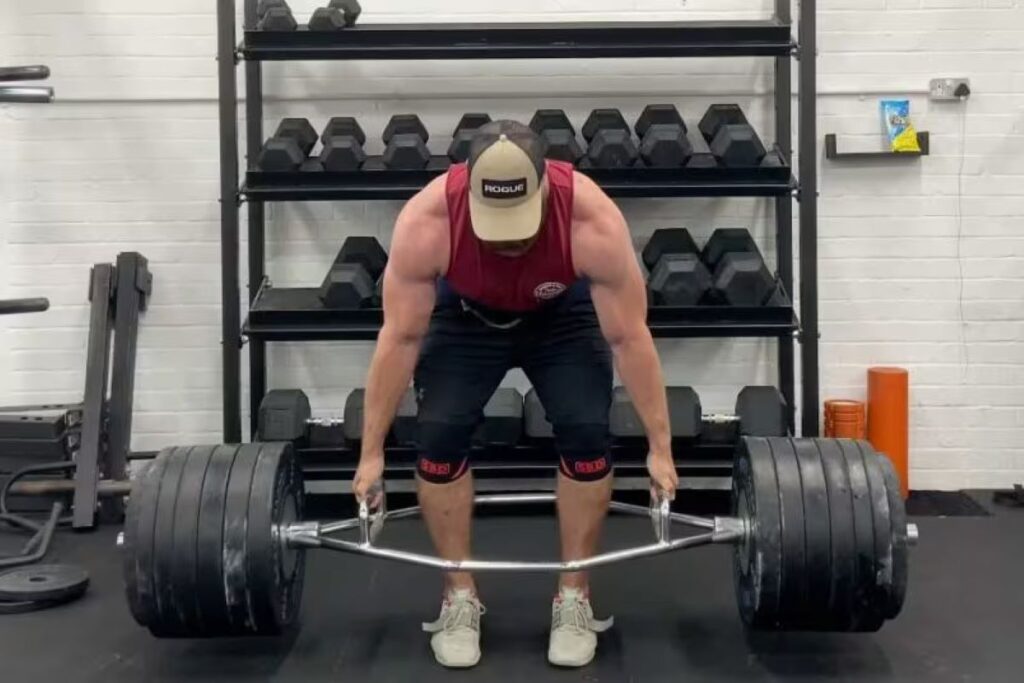
Overview of Trap Bars And Their Types
Trap bars are a blessing for heavy lifters, especially during off-seasons. The “trap” is short for Trapezius, the primary muscle these bars stimulate when used.
Compared to a standard straight bar, trap bars are designed so that the forces from the weight get equally distributed throughout the angled frame of the bar. This allows heavy lifters, or even beginners, to lift large weights much more easily.
There are two main types of trap bars:
1. A Hex Trap Bar
I know what you’re thinking, and no, this is not the same hex that a witch puts on you. In this context, “hex” is short for Hexagon, which is the shape of this trap bar. To use this, you must walk over the rods, stand in the trap bar’s center, and lift it with the two bars provided on the sides.
“Hex” and “Trap” can be used interchangeably when talking about these bars.
2. A C-Shaped Trap Bar
This one is similar to the hex bar, except it’s missing the rod at the back. The C-shaped trap bar provides support from 3 of the four sides.
Although not as common as the standard hex bar, C-shaped trap bars are great for powerlifters that want to squat with the bars.
How Much Do Trap Bars Weigh
Compared to your standard barbell, trap bars weigh slightly more. This is because the standard barbell is only a straight rod. On the other hand, the hex bar has a more complex frame, which uses more material, making it much heavier.
The standard weight of trap bars is about 55 lbs, but based on your training level and preference, various trap bars are available, ranging from 35-65 lbs.
To get the most out of your workout and lift weights easily, knowing which hexagon bar weight is ideal for you is vital.
The exact hex deadlift bar weight varies from brand to brand, but we can broadly classify them into three main categories:
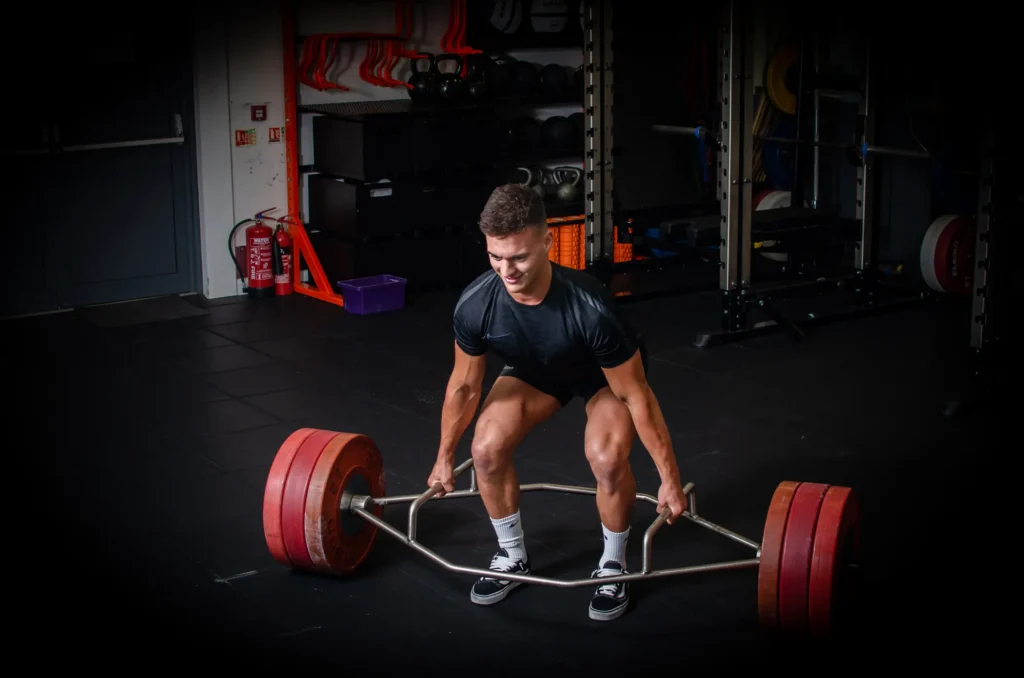
1. The Lightest Trap Bar (The Gerard)
Named after the champion powerlifter and creator of the hex bar, Al Gerard, this is the lightest trap bar, weighing about 45 lbs. Some bars weigh less than this, but the Gerard is the most common in the lower weight category.
This bar is extremely beginner-friendly since the actual weight of the bar isn’t quite as much. If you’re just starting your weightlifting journey, it’s best to start with Gerard. Its lower weight lets you add those extra plates to your trap bar, so you don’t need to feel like you’re only lifting an empty bar.
Although, a lighter weight means it won’t be able to accommodate very heavy weights from multiple plates. Most light trap bars can accommodate a maximum of 300 lbs.
2. The Standard Trap Bar (The Conventional)
The conventional trap bar is the most commonly used and weighs about 55 lbs. However, this deadlift trap bar weight may vary slightly based on the brand you’re using.
For seasoned powerlifters, this is the best bar to use. It provides the right amount of sturdiness and force while still giving you control over the amount of extra weight you can add to it.
Its heavier weight allows it to easily bear the grunt of multiple plates added simultaneously.
3. The Heaviest Trap Bar (XL Trap Bars)
As the name suggests, XL trap bars are the heaviest in the market and weigh between 65-70 lbs. Although your standard 55 lb trap bar should be sufficient, XL trap bars are a good fit if you’re looking to lift even more weights.
They are larger and much stronger, allowing them to easily hold heavier weights without risking breaking or losing their shape.
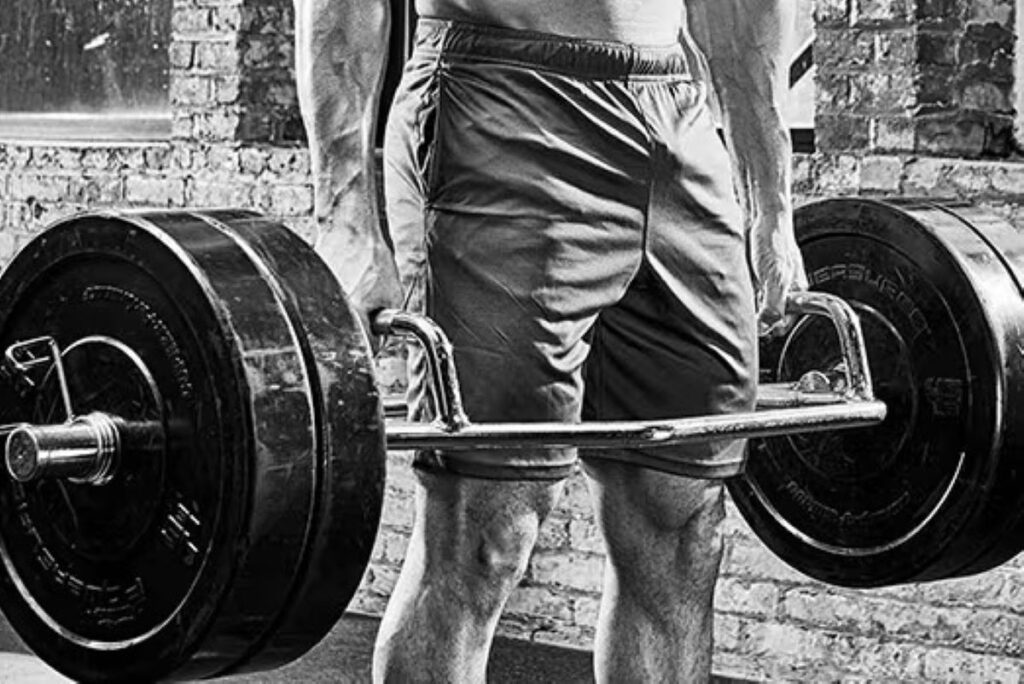
What Affects The Weight of a Trap Bar?
Although there are a few standard weights for hex bars, their actual weight depends on multiple factors. The weight of trap bars greatly varies based on their size, design, and the type of material used.
Factor 1: Size of the Bar
Hex bars come in various sizes, which are directly proportional to their weights. Smaller trap bars weigh less, whereas longer ones weigh more.
Longer hex bars allow you to add more plates to your bar, which means you can lift significantly heavier weights with these.
Factor 2: Size of the Bar’s Handles
All hex bars have two protruding handlebars on either side. These allow you to get a better grip and lift weights more easily. These handlebars also come in two different sizes, and the size of this handlebar can partially affect the weight of the trap bar.
Trap bars with low handlebars weigh less, whereas higher handlebars weigh about 10-15 lbs more.
To put this into perspective, a 315 lb deadlift on a standard straight bar will be a 340 lb deadlift on a hex bar with low handles and a 360 lb deadlift on one with higher handlebars.
Factor 3: Material Used
Most trap bars are made from steel or equally hard material, but the final weight of the trap bar greatly depends on the quality of the material used. Brands usually use lower-quality steel to make their cheaper trap bars, which in turn means that the overall weight of the bar would also be lower.
Heavier trap bars use higher quality steel in them and, therefore, weigh more as well. This allows them to handle the extra weight load.
Factor 4: Design of the Bar
Trap bars are either hexagon in shape or C-shaped. Although these two dimensions may be similar, the weights can significantly vary.
The C-shaped bar is open from one side, meaning it has one less steel bar. As a result, C-shaped bars weigh less than hexagon bars of the same dimension.
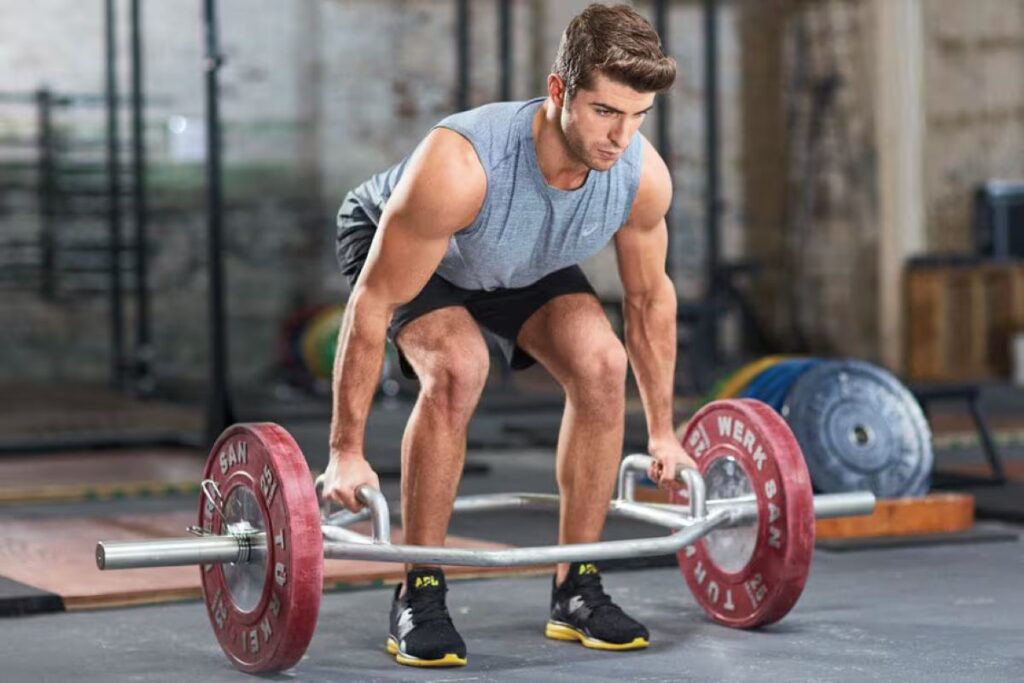
Recommended Trap Bar
Trap bars are a huge success, especially amongst powerlifters during off-season training. So it should be no surprise that many fitness brands now have their version of a trap bar on the market.
Choosing the right trap bar with good quality and size can be a task. After some trial and error, I believe I’ve found the best trap bar on the market. The Rouge TB2 trap bar is a personal favorite.
The TB-2 is an improved version of the original Rouge Trap Bar. Compared to its predecessor, the TB-2 weighs 25% less and has an improved SCH 80 pipe.
The knurled panels on both handlebars provide better grip, decreasing the chances of injuries. The handlebars are also fairly high up at 8.25 inches from the floor.
A particularly interesting feature of the TB-2 is its low handlebars on the opposite side. If you want to use low handlebars, you can turn the trap bar over and use them.
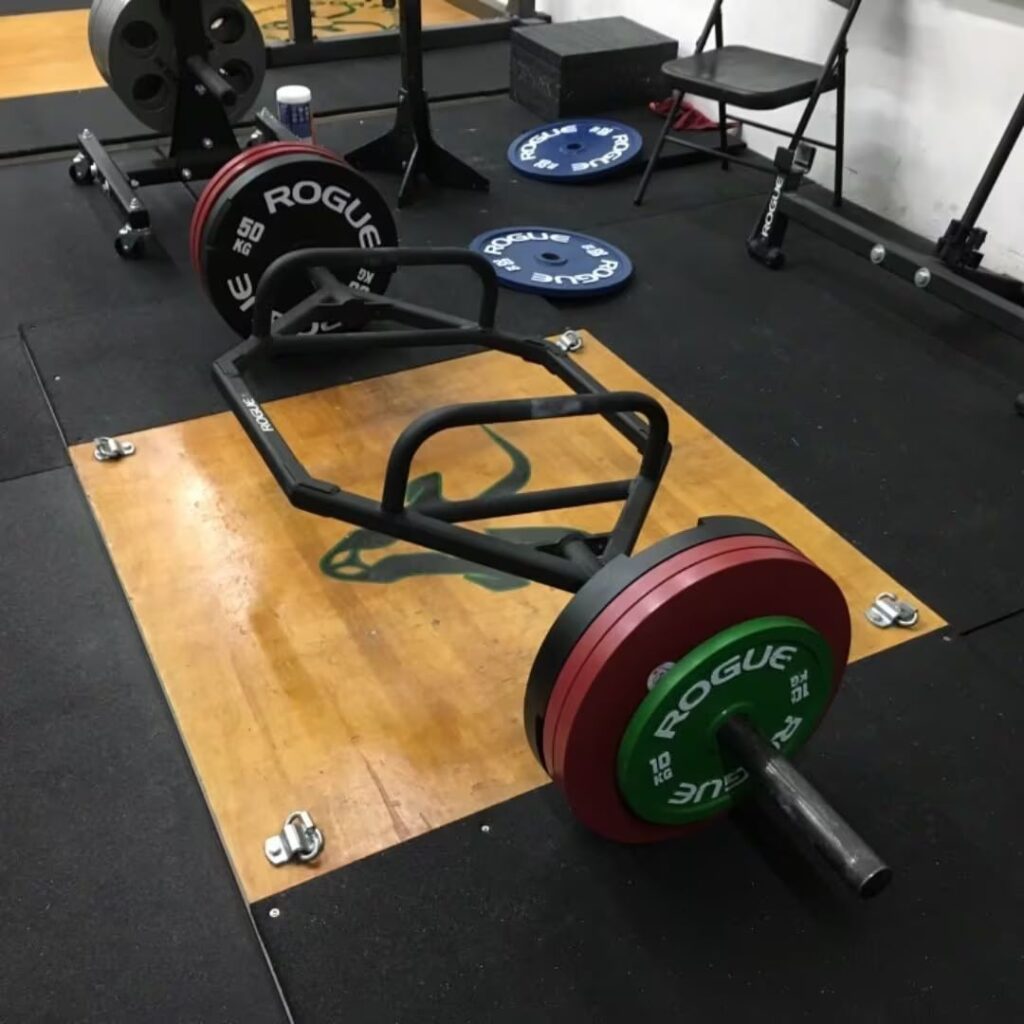
The open area between the handles is also quite spacious and about 50 inches in horizontal width. The 16-inch loading sleeve also lets you load various plates onto it for your deadlifts.
The bar comes in at 60 lbs, meaning it’s made from high-quality and durable metal. Regardless of its higher weight, the TB-2 is still beginner-friendly and a great option for athletes undergoing rehabilitation.
While most trap bars come in silver color, the TB-2 trap bar has a sleek black powder finish. You know what they say, everything looks better in black! The TB-2 is not only great in quality, but also great to look at.
FAQ
Is a Trap Bar Heavier Than a Barbell?
A trap bar is heavier than a barbell. A standard barbell weighs about 45 lbs, whereas a standard trap bar weighs about 55 lbs. This added weight is due to the additional metal used in its more complex design.
Why Can I Lift More With a Trap Bar?
This is because the complex framework of the trap bar allows the weight to distribute through a greater surface area on the bar, compared to a barbell, which is a single long rod with a lower surface area. Using a trap bar increases your weight-lifting capacity by about 10%.
Conclusion
Trap bars are a great replacement for the old-school barbell, as they are safer and allow you to lift heavier weights.
Trap bars come in various weights, which primarily depend upon the type of material used, size, and design of the bar.
Compared to the many trap bars out there, the Rogue TB-2 is arguably the best hex bar in the market.
Let us know how this article helped you and do you plan to replace your standard barbell with a trap bar.
Also read:
- Portable Landmine Attachment
- Best Budget Barbells
- Hex Bar Exercises
- Best Barbell Set
- Best Bumper Plates
- The Barbell Jack Review
- Deadlift Barbell vs Trap Bar
- Dumbbells vs Barbells
References:
- Weight training: Do’s and don’ts of proper technique // Mayo Clinic: https://www.mayoclinic.org/healthy-lifestyle/fitness/in-depth/weight-training/art-20045842
- Anatomy, Back, Trapezius // NCBI: https://www.ncbi.nlm.nih.gov/books/NBK518994
- A Beginner’s Guide to Weight Training // Health Line: https://www.healthline.com/health/how-to-start-lifting-weights
Why Trust Us?
With over 20 years in Olympic Weightlifting, our team does its best to provide the audience with ultimate support and meet the needs and requirements of advanced athletes and professional lifters, as well as people who strive to open new opportunities and develop their physical capabilities with us.
By trusting the recommendations of our certified experts in coaching, nutrition, dietology, and sports training programming, as well as scientific consultants, and physiotherapists, we provide you with thorough, well-considered, and scientifically proven content. All the information given in the articles concerning workout programming, separate exercises, and athletic performance, in general, is based on verified data. We ensure that you can rely on our professionals’ pieces of advice and recommendations that can be treated as personalized ones which will benefit you and fully meet your needs.
The product testing process is described in more detail here
Author: Ihor Shymechko
Pro Olympic Weightlifter, Coach
Best Results: Snatch – 208 kg,
C&J – 240 kg
Ihor has been a professional weightlifter since 1996, boasting over two decades of competition experience. His notable achievements include clinching the European Championship in 2009 and securing a silver medal in the 105kg division at the Senior World Championships in 2011. Ihor represented his country in the 2008, 2012, and 2016 Summer Olympics. After retiring from competitive weightlifting, he transitioned to coaching, leveraging his vast experience to guide athletes who now compete on both national and international stages.

